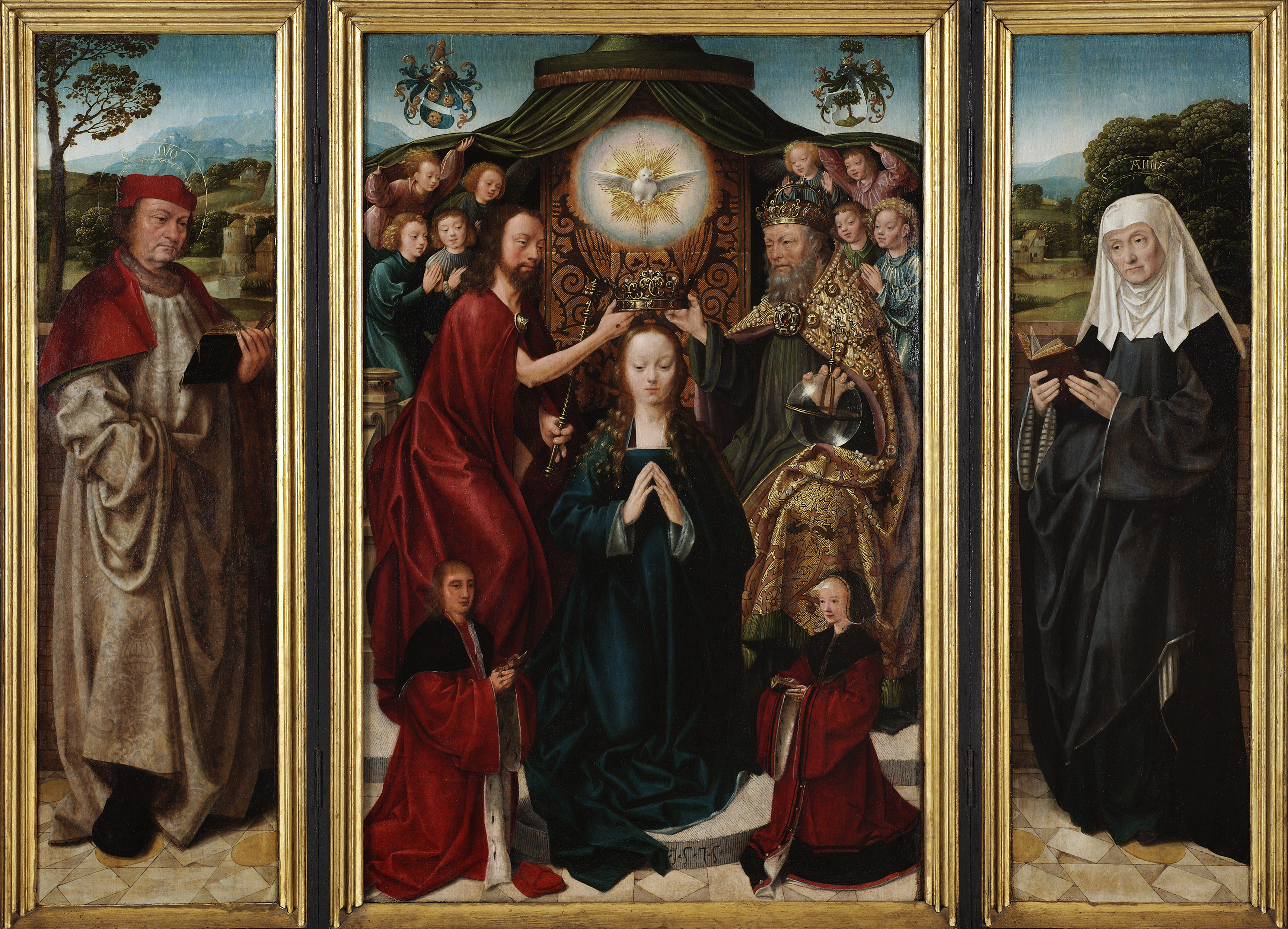
Bartholomaeus Bruyn the Elder (German, 1493-1555)
The Coronation of the Virgin, 1515
Oil on wood
Multiple funds (Purchased with the Hillyer/Mather/Tryon Fund; the Beatrice O. Chace, class of 1928, Fund; the Dorothy C. Miller, class of 1925, Fund; the Madeleine H. Russell, class of 1937, Fund; the Janet Wright Ketcham, class of 1953, Fund; the Margaret Walker Purinton Fund; the Carol Ramsay Chandler Fund; the fund in honor of Charles Chetham; the Katherine S. Pearce, class of 1915, Fund; and the Eva W. Nair Fund)
[on view]
The Museum’s acquisition of early 16th-century German altarpiece by Bartholomäus Bruyn the Elder is remarkable not only because few altarpieces come on the art market, but also because of its fine condition after undergoing conservation at Harvard University’s Straus Center for Conservation. The purchase also satisfied a major goal to acquire a medieval or Renaissance work for the museum.
Dated 1515, this is the earliest known altarpiece by the artist, who was a contemporary of Lucas Cranach and Hans Holbein and the foremost painter in Cologne in the first half of the sixteenth century. It was painted for Dr. Peter von Clapis, a law professor of the University of Cologne, and his wife, Bela Bonenberg, who are represented in small donor portraits in the central panel, which also bears their coats of arms. The figures are well-rendered, a testament to Bruyn’s skill as a portrait painter, and are set within a beautifully depicted landscape. The exterior paintings of Mary and the Archangel Gabriel form a scene of the Annunciation when the altarpiece wings are closed.
The whereabouts of this altarpiece have been a rather long one.
The work was held in Germany during the Nazi period, so the Museum made sure that it was not transferred under duress during the critical 1933–45 timeframe.
Filling an important place in the collection, the new altarpiece offers many possibilities for teaching, such as to study the artists’ materials and techniques, to link it with earlier Netherlandish traditions, to compare it with works by Italian artists of the same period, to study religious symbolism and iconography, to investigate family crests and heraldry, to pursue the lives and history of the patrons and their families, to examine portraiture, to study the lives of the patron and why they were chosen for this altarpiece, to study period costume, and to consider the relationship of such a work to the geographic-artistic context of Cologne, where Bruyn was to settle and become the major painter of the period.
Are there any aspects of this painting that interests you? If this altarpiece is filling a gap in the collection, are there any more gaps that need to be filled?
Look at the X-radiograph(s) of “Coronation of the Virgin Altarpiece” here.
Read about a short article on the viewing experience of the altarpiece here.
Read more about the provenance research process here.
